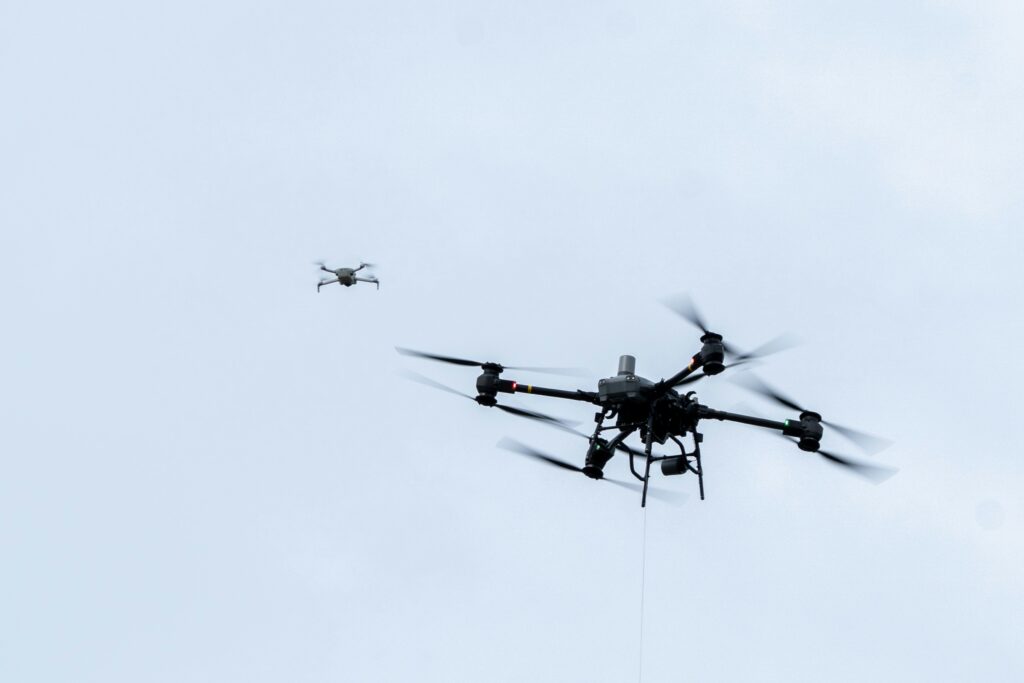Autonomous drones aren’t sci-fi anymore—they’ve carved out a place in modern logistics. From medical deliveries in remote areas to warehouse-to-door drops in dense cities, drones are solving real gaps where trucks fall short. Companies aren’t just experimenting. They’re rolling out actual programs, especially in last-mile delivery where every second and cent counts.
Speed and efficiency are the name of the game. Traditional transport still carries the bulk, but drones are tackling the final stretch. Whether it’s beating traffic or sidestepping terrain, drones are designed to cut the drag.
But here’s the thing: not every bold claim has panned out. Logistics teams are learning what drones are actually good for and what they’re not. Regulations, weather, range limitations—these aren’t just fine print. They’re hard stops. So the hype is fading and the real use cases are stepping into view.
In short, drones are no longer a novelty in logistics. They’re a serious part of the strategy—just not the whole playbook.
Drone Delivery Takes Flight
Same-day shipping has a new contender: drones. In 2024, commercial drone delivery is moving from experimental pilot programs to real-world implementation across sectors. The sky is no longer the limit—it’s part of the supply chain.
E-Commerce Giants Are Leading the Way
Major retailers and logistics companies are testing same-day airborne delivery in urban and suburban areas. The goal is simple: reduce delivery times from hours to minutes.
- Drones are being deployed from fulfillment centers directly to customers
- Lightweight packages, such as electronics and apparel, are prime candidates
- Expect increased rollout in densely populated regions with supportive regulations
Life-Saving Deliveries With Medical Drones
Beyond retail, drones are playing a critical role in healthcare logistics. Medical delivery drones are showing their value in time-sensitive and life-saving scenarios.
- Transporting vaccines, blood products, and emergency medications
- Supporting hospitals and clinics in traffic-congested or remote areas
- Improving response times for critical care needs
Expanding Reach in Rural Regions
For communities in remote or difficult-to-access areas, drones are becoming a practical solution for regular deliveries.
- Drones offer consistent service in mountainous, forested, or low-infrastructure zones
- Rural businesses gain more equal access to shipping and inventory options
- Reduced dependency on long ground routes or poor road systems
Drone delivery is no longer a futuristic concept—it’s quietly becoming reality in industries that rely on speed, efficiency, and reach.
Robotics in logistics isn’t just about moving boxes from point A to point B anymore. Modern autonomous systems rely on a tight mix of navigation technologies, real-time obstacle avoidance, and AI-driven routing to keep operations smooth and efficient. GPS alone won’t cut it. These machines now come equipped with LIDAR, depth sensors, thermal imaging, and on-device AI that helps them react and reroute on the fly.
That performance means nothing if it doesn’t plug in with bigger systems. Real power comes from integration. That means syncing up with warehouse management software, fleet tracking dashboards, and inventory control. When a bot knows what’s in stock, where it needs to go, and when it needs to get there, you’ve got a logistics operation that thinks faster than any warehouse worker could keep up with.
This kind of speed and precision is only made possible with improved connectivity. 5G brings the bandwidth, and edge computing handles the data crunching closer to where it’s generated. No lag. No central-server bottlenecks. Robots can process, decide, and act in milliseconds. That turns automation into something lean and reactive, instead of bulky and slow.
The rise of drone and autonomous delivery tech is starting to reshape logistics in a big way. Packages are getting to doorsteps faster, without the need for human drivers or traditional fleets. We’re talking short response times and tighter delivery windows, especially in cities.
Then there’s the environmental angle. By taking gas-powered vans off the streets and replacing them with electric drones or compact autonomous vehicles, the carbon footprint drops significantly. It’s not just faster—it’s cleaner.
And with real-time tracking built into nearly every system, both customers and businesses get more visibility. You know exactly where your order is, when it’s arriving, and what’s happening on the backend. For vloggers covering tech, business, or lifestyle, it’s a new corner of innovation worth watching.
Drone Vlogging Hits a Ceiling
Drone vlogging has exploded over the last few years, delivering cinematic views and dynamic travel content. But in 2024, it’s starting to hit some turbulence. One major problem is regulation. Air traffic laws are struggling to keep pace, and creators are getting caught in the confusion. Rules vary wildly by location, and what’s legal in one city might get you fined or grounded in another.
Safety is also front and center, especially in crowded urban settings. With more drones buzzing around cityscapes, the risk of accidents is climbing. Crashes aren’t just bad for gear—they’re dangerous for people. That’s making local governments more cautious. Some are flat-out banning drones in dense areas.
Then there’s the weather. Drones don’t play well with wind, rain, or sudden shifts in temperature. For vloggers who want consistency, that unpredictability can kill a shoot day. And recent tech improvements haven’t solved these limitations yet.
Lastly, residential privacy is becoming a bigger issue. Homeowners don’t want flying cameras hovering near balconies or backyard pools. That tension is pushing creators to rethink when, where, and how they use drones if they want to avoid public backlash and possible litigation.
The age of delivery drones isn’t coming. It’s already circling overhead. Logistics companies are going beyond pilot programs and starting to install infrastructure tailored specifically for drone fleets. Rooftop landing pads, charging hubs in urban corridors, and automated parcel loading bays—this is the new logistics real estate.
Startups aren’t sitting out either. They’re racing to design drones built for tight city drops, all-weather performance, and smarter obstacle avoidance. Some companies are building drones purposefully for hyper-local delivery, with swappable payload systems and increased range—all while keeping noise and privacy concerns in check.
But going fully autonomous is still a stretch. For now, the smart money is on blending humans and machines. Think: ground crews managing takeoffs, technicians overseeing remote diagnostics, and route strategists adapting deployments in real time. The top players are building hybrid teams, where autonomous fleets do the heavy lifting but trained professionals keep things sharp and safe.
For an even closer look at human-robot synergy, check out Cobots vs. Traditional Robots – Which Are Better for Modern Workplaces?.
Regulatory Greenlights and the Coming Drone Logistics Boom
Governments are finally catching up. In the last year, agencies like the FAA and the European Union Aviation Safety Agency have expanded airspace access and streamlined testing approvals for drone delivery. These aren’t just pilot programs anymore. Licenses are being issued, flight corridors outlined, and local zones greenlit for autonomous logistics. The policy bottleneck that slowed down drone adoption is beginning to clear.
With regulation loosening up, regional drone delivery networks are already forming. Think local distribution nodes replacing last-mile trucks. Companies are setting up hub-and-spoke models where drones can launch, land, recharge, and reload with high efficiency. These networks aren’t science fiction. You’ll find them in rural North Carolina, parts of Ireland, and industrial zones in Singapore. They’re small today, but they’re learning fast.
The forecast? Within three to five years, drone delivery will move beyond the niche. Logistics firms and retail brands are betting on it to solve last-mile headaches, especially in areas where traditional delivery costs too much or takes too long. If 2020 was the year of remote work, 2025 could be the year your package drops from the sky—on time, with zero traffic.
Drones aren’t going to replace every camera rig or production setup, but they’re no longer just aerial toys or B-roll gimmicks either. In 2024, vloggers are using drones more strategically—capturing dynamic movement, providing top-down context, and even building entire formats around drone-first footage. They add production value fast, and platforms are rewarding visually distinct content more than ever.
Companies and creators who get ahead of the curve are locking in time and cost advantages that laggards just can’t match. Fast location scouting. Quick crowd shots. Automated follow modes. Suddenly, the barrier to cinematic quality is a bit lower, and audiences are noticing.
That said, flying a drone isn’t a free-for-all. New airspace restrictions, local laws, and evolving sustainability concerns all come into play. Smart creators are learning not just how to fly, but how to plan. Legal layouts, quieter tech, and green battery choices aren’t just nice to have—they’re becoming baseline expectations.
Like most tools, drones are about how you use them. Used well, they expand your palette. Used carelessly, they cause headaches. Stay sharp, stay compliant, and fly with intention.


 Mikeric Edwardsons is a technology writer at gfxrobotection, specializing in cybersecurity trends, software solutions, and modern tech innovations. His content simplifies complex topics to deliver real value for both beginners and tech professionals.
Mikeric Edwardsons is a technology writer at gfxrobotection, specializing in cybersecurity trends, software solutions, and modern tech innovations. His content simplifies complex topics to deliver real value for both beginners and tech professionals.

